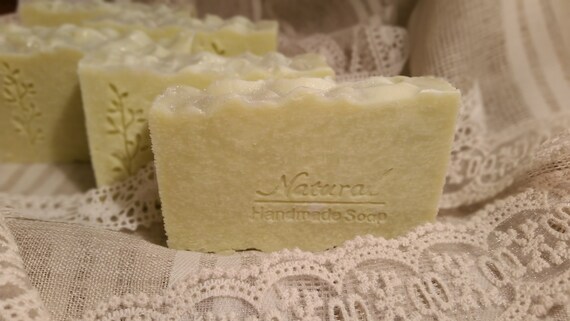It is always interesting question for all soapmakers! I make both hot and cold process soaps and I often get the questions - What's the difference? Does it matter if it is cold or hot?
You can read my previous posts for cold process and hot process soapmaking.tutorial. Shortly,
you prepare lye solution, prepare melted oils/butters, add lye solution into oils and stir until the trace.
After this point the two methods differ:
In the cold process method you add all additives (herb extract, additional oils), colorants/dyes, fragrance/essential oils; pour soap into mold and after 24-48 hours you can unmold the soap and cut into bars. These bars need to be cured for 4-6 weeks.
In the hot process method the soap is heated on the oven (about 2-3 hours) or in a crockpot (about 1-2 hours). After the soap reaches gel phase and saponification process ends, you can add all additives (super-fatting oils, fragrances/essential oils, colorants) and pour the soap into mold. After the soap cools down and hardens you can cut it into bars. They can either be used immediately or be cured for 1-2 weeks.
Pioneer soapmakers, boiling their soap in big kettles over an open fire were basically doing a hot process soap.
Is one better than the other?
Let's take a look on the cold process method:
Pros:
- You can use different colors/dyes and create a nice decoration of soap (such as, swirls technique).
- You can use different molds to create varied shapes.
- You can create much smoother looking bars.
Cons:
- Curing time takes up to 6 weeks.
- Fragrance and essential oils can be changed during curing time.
- You don't know exactly which oils will stay for nourishing aim after they react with lye.
- All additives, such as honey, juices, purees of veges and fruits, herbs extracts, will react with lye and will loose their healthy potential.
Now we can discuss the hot process method:
Pros:
- Curing time is much faster. You can use the soap bars immediately after cutting, but it's better to let them about 1 week or so to evaporate the water.
- All nourishing ingredients have to be added after saponification ends and they will not react with lye, keeping their compassionate function.
- You will know which oils will go to super-fat - because you can add more expansive, nourishing oils after the chemical reaction (saponification).
Cons:
- The soap has a rougher, more rustic look.
- It's not a lot of variations for design this soap, because it is too thick, for example, for swirls.
- Difficult to use individual molds for each soap bar because thickness.
- You need to spend your time for "cooking" the soap. It takes about 2-3 hours.
So, both methods have their advantages and disadvantages.You can try each of them and decide which method is better for you. Or you can use both of them, like me, and take all their advantages from time to time.























